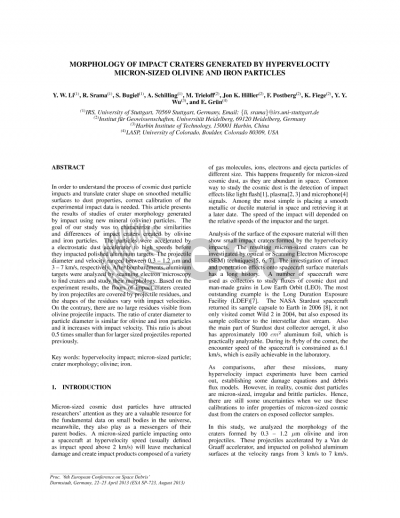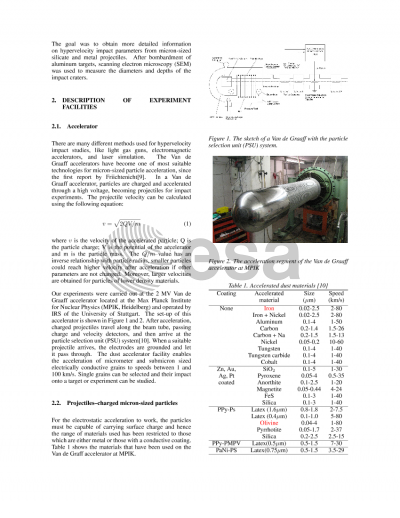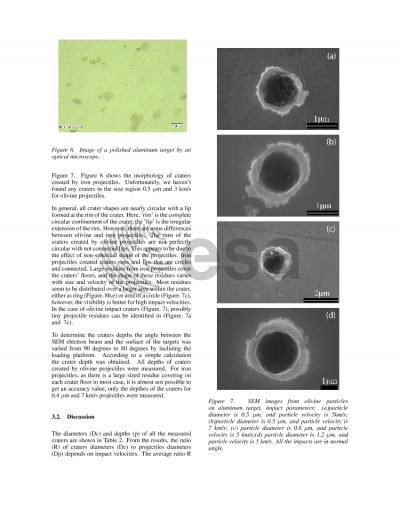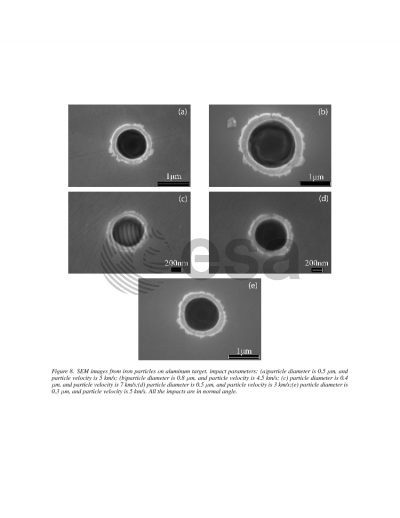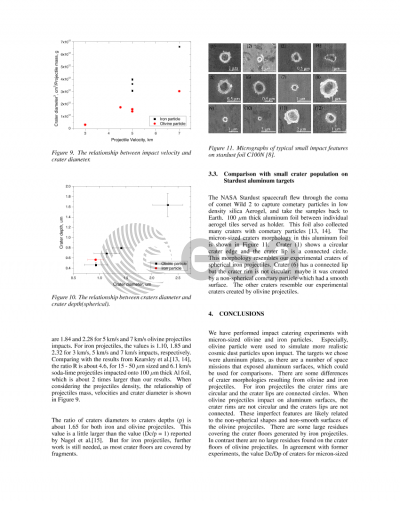Document details

Abstract
In order to understand the process of cosmic dust particle impacts and translate crater shape on smoothed metallic surfaces to dust properties, correct calibration of the experimental impact data is needed. This article presents the results of studies of crater morphology generated by impact using new mineral (olivine) particles. The goal of our study was to characterize the similarities and differences of impact craters created by olivine and iron particles. The particles were accelerated by a electrostatic dust accelerator to high speeds before they impacted polished aluminum targets. The projectile diameter and velocity ranged between 0.3 - 1.2 mum and 3 - 7 km/s, respectively. After bombardments, aluminum targets were analyzed by scanning electron microscopy to find craters and study their morphology. Based on the experiment results, the floors of impact craters created by iron projectiles are covered by projectile residues, and the shapes of the residues vary with impact velocities. On the contrary, there are no large residues visible from olivine projectile impacts. The ratio of crater diameter to particle diameter is similar for olivine and iron particles and it increases with impact velocity. This ratio is about 0.5 times smaller than for larger sized projectiles reported previously.
Preview
